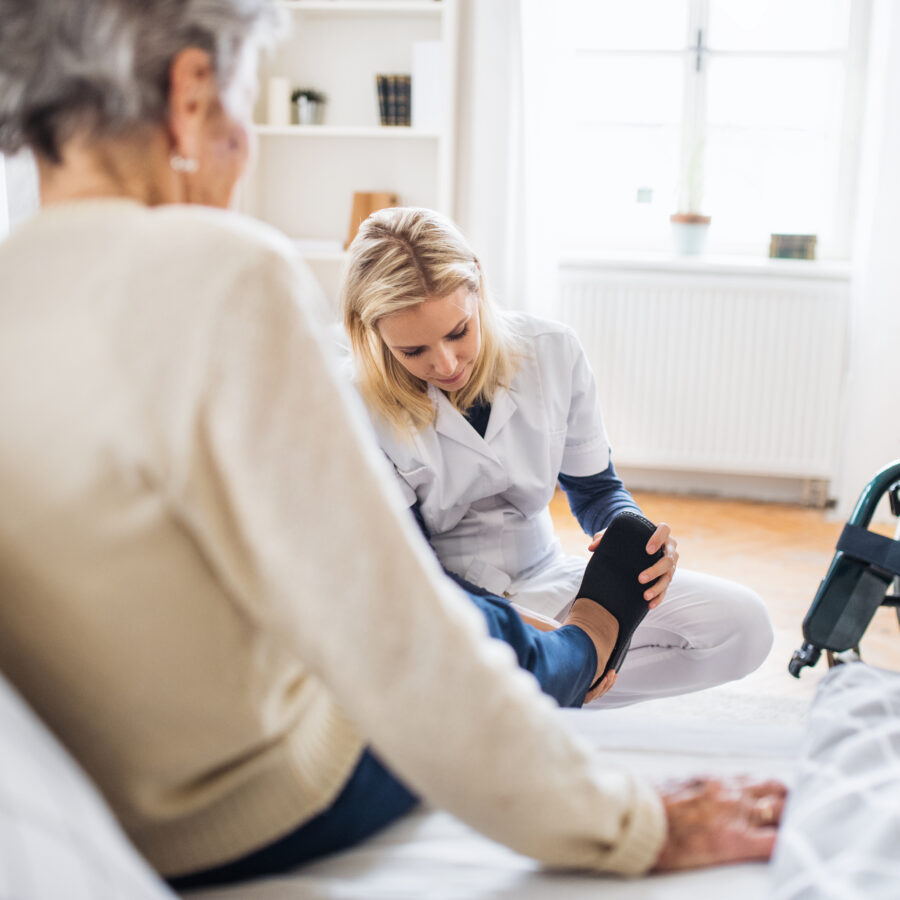An important factor in determining a senior loved one’s ability to continue to live independently is whether they can continue to do the everyday tasks we sometimes take for granted.
Older fingers can make working clasps, buttons, and zippers difficult (or even impossible). Also, having a decreased range of motion and/or issues with balance can make dressing themselves challenging.
Many seniors are able to stay independent longer by using innovative clothing – specially designed garments called adaptive (or geriatric) clothing that can help keep Mom and Dad living independently for years to come.
In addition to using fasteners designed for older fingers to manipulate, adaptive clothing can help people recovering from surgery and those who require the use of a wheelchair be more comfortable and safer when dressing.
If you were wondering if it is worth it to sacrifice fashion for convenience, the good news is that you don’t have to choose! In many cases, the specialty garments appear indistinguishable from traditional clothing. As a result, the wearer can both look their best while feeling independent and safe.
Types of Adaptive Clothing
- Magnetic and Velcro closures –While Velcro has long been a go-to alternative to buttons, magnetic closures for shirts, sweaters and jackets are becoming increasingly popular. Why are magnets so preferable? Velcro may start off working well, but it tends to collect lint as it is used and become less effective over time. However, people with pacemakers need to avoid clothes with magnet closures, which could interfere with the device’s electric signal. For them, non-metallic Velcro is still the best option.
Magnetic and Velcro fastened clothes are ideal for people who spend a lot of time in bed or in a wheelchair. Caregivers can easily help with the fastening without disrupting their comfort. These items include tops that open in the back or down the side, and pants with side closures to make them easier to put on and take off.
- Elastic waistbands – Pants and shorts with elastic waists not only eliminate the need for closures altogether, they also offer additional stretch, making them a more comfortable option. Pants with elastic waistbands are much easier for people with balance issues to put on and remove independently.
- Pull on clothing – Instead of fiddling with buttons, pull on clothes just slip right over Mom or Dad’s head or waist. They’re made out of stretchy material that allows them to be easily put on or removed.
- Shirts with port flaps – People with chest ports can find their treatments to be uncomfortable and inconvenient because traditional shirts don’t offer easy access. There are specialty tops that feature a flap which opens to expose a chest port, allowing patients to remain dressed while they get their treatments, which is especially helpful for senior loved ones who face challenges putting on and taking off clothing.
- Compression clothing – Helpful for people who are affected by issues like arthritis, lymphedema, leg edema and swelling, a variety of compression clothing is available including socks, gloves and braces for joints including elbows, knees, and wrists.
- Hands-free shoes – Featuring a large opening that allows a foot to be slipped in without bending over to tug on the footwear, hands-free shoes are engineered to take care of senior needs in other ways, too. They come with gripping rubber soles designed to prevent slips and falls, and they’re wider than other shoes to accommodate issues like swelling, bunions and corns.
Where to Find Adaptive Clothing
Many online specialty shops feature a wide range of senior-friendly clothing. They include Buck & Buck, MagnaReady and Silverts. However, big box retailers including J.C. Penney, Kohl’s, and Zappos all now have added adaptive clothing to their offerings to account for the increase of seniors in the population.
Adaptive clothing not only makes life simpler and easier for our senior loved ones by empowering them to continue to take care of themselves – it can help preserve their sense of independence while maintaining their dignity at the same time.
Discover more health and wellness tips for seniors on Bethesda’s blog.
Back to All Posts


